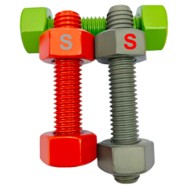
Untangling outfit numerics can feel like mapping a private cipher
- Noting your individual frame starts the sizing journey
- Record chest, waistline and hip dimensions to guarantee match
- Look up the producer's size map before selecting
Say no to trusting number labels alone; they vary widely Rather, measure yourself and verify with the size map. Discovering wardrobe identity is an individual experiment.
Understanding the enigma of measurement guides
Garment sizing bewilderment is a frequent global issue. Interpreting measurement charts sometimes resembles a tough puzzle, since companies implement varied fit benchmarks. Nevertheless, learning a few rules will let you master size charts.
- Commence by checking the sizing standards used per brand. Most charts reference US, UK, European and Asian frameworks.
- Subsequently, match the exact bust, waistline, hip and length data. Compare the brand's numbers to your body data.
- Lastly, review the company's fit guidance for special advice. Guides frequently offer tips, fit notes and sizing caveats.
Zeroing in on your true fit when browsing
The landscape of clothing scales may leave buyers puzzled. Sized markers vary so a medium can match a different small. Discrepancies result from brand-specific scaling systems. Consequently first take careful measurements of your body. Take a flexible tape and note bust, waistline and hip stats. Avoid relying purely on your customary size label. Sizes may change even inside the same brand depending on style. Honing in on ideal fit calls for tests across sizes and shapes.

Weighing standard sizing against custom solutions
For certain products the decision is between off-the-shelf and made-to-fit options. There are benefits and drawbacks to either approach. Ready-made dimensions grant convenience and often reduced cost. Personalised sizing works well for atypical spaces or requests
- Consider requirements and cost when selecting size approach
- Collect precise size data whether for room or clothing
- Check out producers and their options to make an informed pick
Ultimately the suitable measurement varies with your circumstances.
Working through international measurement swaps
Crossing between national and brand size systems can feel like a maze. Happily, conversion resources can clarify the mapping between sets. First, acquaint yourself with typical clothing and shoe scaling frameworks. Reference conversion tables for matching sizes across regions. Consider that personal body contours determine how sizes fit. Don't hesitate to read reviews and size notes before buying.
Clear steps to find the right clothing fit
Handling measurement charts can be taxing for buyers. Designers commonly adopt independent measurement schemes, nevertheless these guidelines provide practical help for shoppers.
- Begin with correct self-measurement using a flexible tape
- Then compare those numbers to the sizing chart provided
- Consider form since body proportions modify fit results
Ultimately, hands-on trials let you evaluate fit most accurately.
A comprehensive reference for men's and women's sizes
Size confusion intensifies for online shoppers without fitting rooms. Accordingly, the following is a full guide to standard gendered sizes. Whether pants, shirts or dresses, these tips will assist your choice.
- Initially recognise variation across brands and countries
- Also, record waist, hip, bust and chest dimensions precisely
- Lastly, choose the larger size if your numbers land between charts
By following these tips you can approach size charts with confidence. Happy hunting for the perfect size!

Helping parents understand children's size charts
Choosing a child's size can be surprisingly challenging. Kids' fast development means you must re-measure frequently. Prefer the vendor's size guide over age-based assumptions. Take child's chest, waist and height readings accuratelyA guide to precise bust, waist and hip measurement
Getting clothes to flatter relies on precise body measurements. Use a measuring tape and helper to ensure correct measurements. Adopt a neutral upright posture with feet apart and relaxed shoulders
All about size spans from extra small to double extra large
Today’s sizing landscape has grown complex and varied. Wide inter-brand variation erodes uniformity in sizing. Analyzing the spectrum of sizes helps resolve confusion. Let's break down what each size label signifies in reality!
Encouraging celebration of body diversity

Acceptance of all sizes celebrates human variety and worth. This involves rejecting narratives that demand one ideal shape. Together we can create spaces that foster body comfort and pride.
- Select habits that promote acceptance and healthy self-view Opt for daily practices that reinforce body love Choose Size Chart body positivity and self-acceptance every day Decide each day to celebrate body kindness and positive views
- Hold in mind that appeal manifests across varied sizes
- Critique visuals and stories that push a single beauty model
- Commit daily to encouraging body acceptance and love
